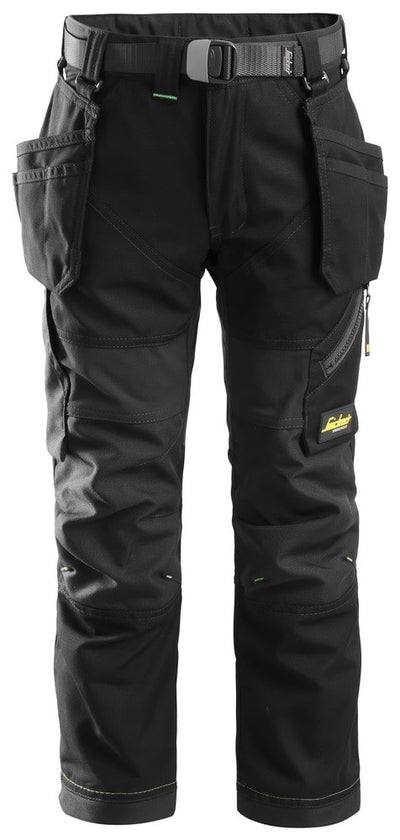Heavy-Duty Work Shirts That Don’t Feel Like Armour
Introduction to Heavy-Duty Work Shirts
When you're on the job all day—whether in construction, landscaping, or mechanical work—you need clothing that holds up to the task. But too often, heavy-duty work shirts feel like you’re dragging around a canvas tent. That’s where comfort-focused designs come in. Let’s explore why you no longer need to choose between durability and wearability.
What Makes a Work Shirt “Heavy-Duty”?
Fabric Types and Durability
Heavy-duty shirts are designed to resist wear and tear. They’re often made of:
-
Cotton duck – known for its rugged weave.
-
Ripstop – a lightweight yet tear-resistant fabric.
-
Canvas blends – for strength and structure.
Reinforced Stitching and Construction
Look for triple-stitched seams, bar tacks in stress zones, and double-layered elbows. These aren’t just style features—they extend the shirt’s life significantly.
Comfort Is Key: Why You Shouldn’t Have to Suffer
Breathability and Moisture Control
Nobody wants to work all day in a sweatbox. Shirts that offer:
-
Mesh vents underarms
-
Moisture-wicking linings
-
Open-weave cotton panels
…can be game-changers.
Flexible Designs for Active Jobs
Stretch panels and gusseted underarms help you move freely. Work doesn’t stop just because your shirt’s stiff.
The Balance Between Tough and Comfortable
Weighing Material Strength vs. Flexibility
Traditionally, the tougher the fabric, the stiffer the shirt. But new blends—like cotton-poly and spandex-cotton—balance toughness with flexibility.
How Modern Fabrics Solve the Old Dilemma
Many manufacturers now use tech-integrated fabrics with smart breathability, odour control, and water resistance, all without adding weight or bulk.
7 Game-Changing Picks for All-Day Comfort
Pick 1: Lightweight Yet Durable Shirt
These shirts use ripstop material that feels like a second skin but resists punctures and snags. Great for electrical and tech work.
Pick 2: Moisture-Wicking Work Shirt
Look for shirts labelled with “cooling technology” or “quick-dry performance.” They often have mesh-lined collars and roll-tab sleeves.
Pick 3: Flex-Fit Industrial Shirt
Made with 3–5% spandex blended into tough cotton, these shirts are ideal for jobs with repetitive motion or lifting.
Pick 4: All-Season Versatile Shirt
Roll-tab sleeves, dual-layer construction, and vented backs make these perfect for variable climates.
Pick 5: Ultra-Soft Canvas Work Shirt
Canvas can be softened using pre-wash treatments, giving you durability without the break-in period.
Pick 6: Vented Utility Shirt for Summer
Mesh vents, lightweight construction, and UPF 50+ protection make this a summer essential.
Pick 7: Thermal-Lined Winter Work Shirt
Perfect for colder jobs, these shirts often feature flannel or fleece linings with wind-resistant outer shells.
Features You Should Look for in a Work Shirt
Sun Protection Ratings
If you’re working outdoors, UPF-rated fabric is a must. Aim for at least UPF 30+.
Hidden Pockets and Utility Details
-
Pen sleeves
-
Interior device pouches
-
Tool loops
These details help you stay organised on-site.
Easy Maintenance and Longevity
Wrinkle-resistant, machine-washable fabrics save time and money. Garment-washed shirts also tend to last longer and shrink less.
How to Choose the Right Fit for Your Work Environment
-
Tight fit: better for minimal snag risk.
-
Relaxed fit: ideal for layering in cold environments.
-
Tailored fit: offers a more modern look without sacrificing mobility.
Try sizing one up if you wear thermals underneath during winter.
Comparing Classic vs. Modern Styles
| Feature | Classic Work Shirt | Modern Work Shirt |
|---|---|---|
| Fabric | 100% Cotton | Cotton-blend w/ tech |
| Fit | Loose | Tailored/flexible |
| Weight | Heavy | Lightweight/durable |
| Design | Basic | Vented, multi-pocket |
| Maintenance | High | Low/easy-care |
Layering Strategies with Work Shirts
-
Cold Weather: Thermal undershirt + flannel-lined work shirt + shell jacket.
-
Hot Weather: Moisture-wicking tee + vented lightweight shirt.
-
Rainy Days: Quick-dry shirt + waterproof outer shell.
Frequently Asked Questions (FAQs)
1. Can a comfortable shirt still be considered “heavy-duty”?
Yes! With new fabric technologies, comfort and durability are no longer mutually exclusive.
2. Are synthetic fibres as durable as cotton canvas?
Modern synthetic blends often outperform traditional fabrics in moisture control and flexibility, while maintaining durability.
3. Do all heavy-duty shirts need to be ironed?
Nope. Many modern work shirts are wrinkle-resistant and require little to no ironing.
4. What’s the best shirt for hot climates?
Look for shirts with mesh ventilation, light colour fabrics, and moisture-wicking properties.
5. How long should a high-quality work shirt last?
With proper care, a quality shirt can last 2–3 years under regular use.
6. Where can I find more on workwear safety standards?
Check out Health and Safety Executive (HSE) for UK-specific regulations.
Conclusion: Finding Your Ideal Work Shirt
You don’t need to sacrifice comfort to stay protected on the job. With advancements in materials and thoughtful designs, today’s heavy-duty work shirts offer both. Whether you’re facing summer heat, winter chill, or anything in between, there’s a shirt built to keep you safe, productive, and comfortable.
Take the time to find one that suits your environment, workload, and personal preference—your back (and your mood) will thank you for it.
Shop Your Next Shirt
2580 Snickers Logo T-shirt Grey





